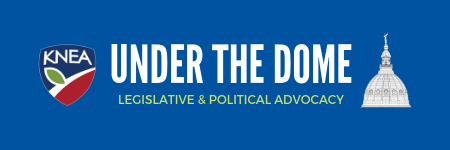Legislators and the press are reading a report from the Kansas Legislative Division of Post Audit regarding the expenditure of at-risk funding by a select number of Kansas school districts. You’re probably reading about it, too.
The sexy sound bite is an assertion in the report that auditors found $190,525 dollars to have been spent (in their opinion) on things that “were not directly related to at-risk students or programs.” Sounds like a scandal, doesn’t it?
Not to us it doesn’t. No, to us, the scandalous part of the report is the part where auditors found that school districts spent $36,927,519.00 more dollars on at-risk programs than the state of Kansas provided them. That’s right. Of the nearly $162 million that the 20 districts studied spent on at-risk students and programs, about 23% of it was provided by the districts above what they got from the state.
Districts spent $37 million more on at-risk students than the state provided, but we’re going to take those districts to task for $190,000 dollars that someone thought was not linked closely enough to at-risk students.
And what were some of the expenditures that allegedly don’t help at-risk students? Purchasing Google Chromebooks for students to use. Purchasing a projector that will help visual learners. Purchasing additional math and reading books. Providing part of a school nurse’s salary. Professional development for teachers.
Here’s what our members tell us: Every dollar spent on their schools is spent to help students. Our members are dedicated to helping children achieve their full potential and much of that dedication is reflected in the work they do every day to bring children with challenges to ever higher levels of learning. They adjust for student learning styles; they differentiate instruction; they create individual plans of learning. Our members welcome a diverse group of children into their classrooms every day and they don’t isolate the “at-risk” kids so that only they can see what that projector is showing on the screen.
Our members know that children in poverty need a school nurse because they need to be well to learn.
Our members know that children reading below grade level need specialized reading books that are high interest and lower level to keep them engaged in reading and developing their skills.
Our members know that children without a computer at home still need to compete and so a school Chromebook is important for them.
Our members know that copiers and printing services are necessary to produce supplementary classroom materials.
Our members know all of this because they dedicate their lives to serving children and they chose this profession because they have always wanted to make a difference in the life of a child that others might just give up on.
We applaud the school districts that have made the commitment to serve these children by covering the $37 million at-risk funding deficit so that our teachers can make that difference. We appreciate the guidance provided to school districts by the Kansas State Department of Education as we work to implement effective programs of instruction for all children.
Now that’s something worth talking about.


